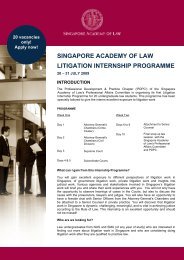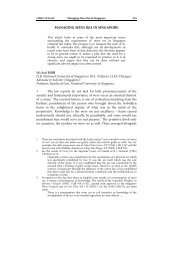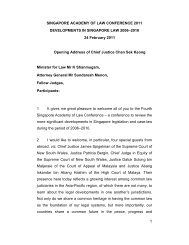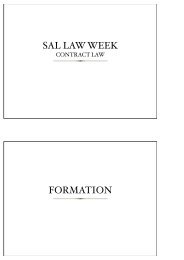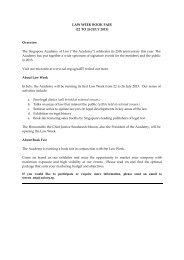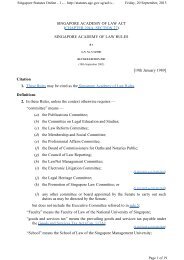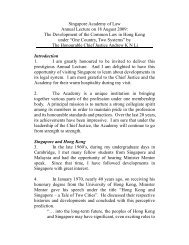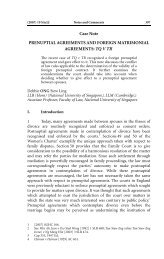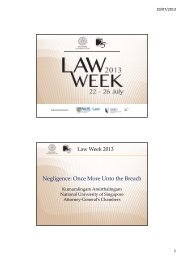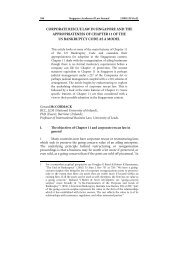View Article - Singapore Academy of Law
View Article - Singapore Academy of Law
View Article - Singapore Academy of Law
Create successful ePaper yourself
Turn your PDF publications into a flip-book with our unique Google optimized e-Paper software.
15 SAcLJ Matrimonial Assets and the 3 rd Party 283<br />
dealt with the husband’s judgment creditor’s application for a charging<br />
order against the matrimonial home, as well as the wife’s application for<br />
ancillary relief pursuant to the granting <strong>of</strong> a decree nisi. The court noted:<br />
“..Unless it appears to the court hearing the application for the<br />
charging order absolute that the circumstances are so clear that it<br />
is proper to make the order there and then, the usual practice<br />
should be to transfer the application to the Family Division so<br />
that it may come on with the wife’s application for ancillary<br />
relief and one court can then be in a position to consider all<br />
the circumstances <strong>of</strong> the case.” (per Balcombe LJ at page 559<br />
a-b, emphasis added)<br />
179 A similar situation arose in the case <strong>of</strong> Customs and Excise<br />
Commissioners v A and another 110 where the wife filed an application for<br />
ancillary relief in the county court pursuant to the granting <strong>of</strong> a decree<br />
nisi. In the meantime, the husband was convicted <strong>of</strong> drug trafficking, and<br />
a confiscation order was made against him in the Crown Court under the<br />
Drug Trafficking Act 1994. The Crown Court appointed a receiver over<br />
all the husband’s assets, save for the matrimonial home and the surrender<br />
value <strong>of</strong> the policies, for the purpose <strong>of</strong> enforcing the confiscation order.<br />
The Customs and Excise Commissioners applied for the matrimonial<br />
home and the policies to be included in the realisable property. Both<br />
matters were ordered to be heard by the Family Division <strong>of</strong> the High<br />
Court.<br />
“It is a commonplace <strong>of</strong> family law for parties’ liabilities to<br />
exceed their assets. A husband may have substantial debts to<br />
third parties which he wishes to clear by using his share <strong>of</strong> the<br />
prospective proceeds <strong>of</strong> sale <strong>of</strong> the matrimonial home.<br />
Exercising its jurisdiction under ss 24 and 25 <strong>of</strong> the 1973 Act in<br />
such a case, the court may well transfer the husband’s interest in<br />
the property to the wife, thereby leaving him to meet his<br />
liabilities from other sources…In a case such as the present,<br />
the court does not artificially delete Mr A’s debts and then<br />
consider the adjustment <strong>of</strong> assets. If the court has jurisdiction<br />
to make orders under s 24 <strong>of</strong> the 1973 Act in these<br />
circumstances, what it does, in simple terms, is to decide<br />
whether, in all the circumstances <strong>of</strong> the case, and applying<br />
the s 25 criteria (which themselves include the fact that Mr A’s<br />
share <strong>of</strong> the house and the policies are the subject <strong>of</strong> a<br />
110<br />
[2002] 2 All ER 736



